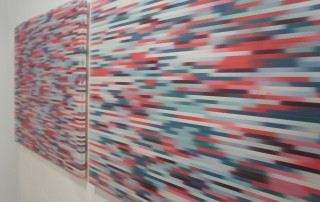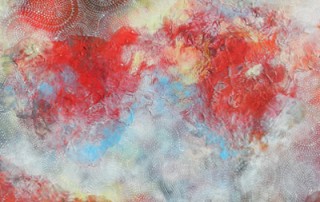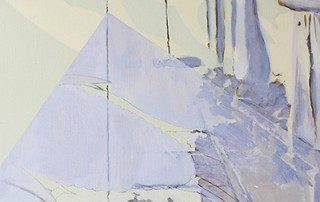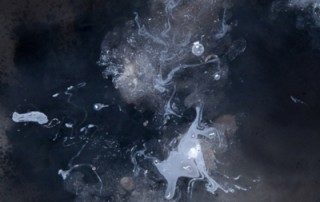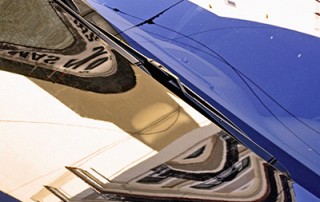Project Description
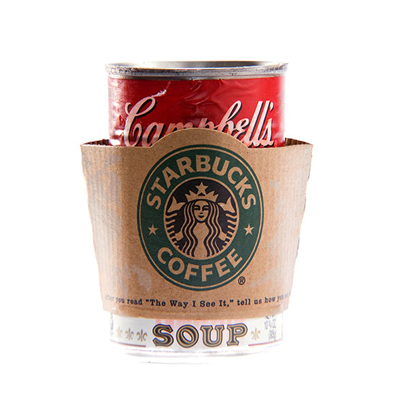
Oliver Krisch
Oliver Krisch, born in Venezuela in 1977, has been a photographer since a teenager, inspired by his uncle Pablo Krisch, one of Venezuela’s best known industrial photographers and winner of National Photography Prize 2015. Together they extensively travelled around Venezuela taking images of landscapes and oil refinaries. Krisch also studied photography with Luis Brito a renowned Venezuelan photographer also winner of the National Photography Prize and creator of outstanding portraits.
Before moving to California in 2006, he exhibited his work at the National Gallery of Caracas and Museo Mario Abreu in Maracay, and his images were published in significant magazines such as Ocean Drive and Complot. While in Venezuela Krisch primarily focused on commercial and documentary photography but when he moved to Los Angeles his work started to move away from these styles and Krisch started to experiment with the depiction of objects and with the digital manipulation of images.
In 2007 Krisch won an honorable mention at the MOLAA Awards, a juried art competition held at the Museum of Latin American Art in Long Beach, California. The winner piece, Reggaeton (Nuevo Pop Latino), appropriates the style of pop artists Andy Warhol and Roy Lichtenstein to present a multiple image of a commercial product that contains a commentary on the socio-economical issues that many Latin American immigrants face in the United States.
Krisch’s works are characterized by their irony; he usually plays with the double meaning of objects and words, either in English or Spanish, to create pieces that contain a highly conceptual message. In several of his photographs he also shows a pursue of themes of cultural identity, with a special focus not only in the minorities living in the United States but also in identity issues related to his own Venezuelan heritage, including series of works that deal with santeria (a syncretic religion that fuses catholicism with African believes).
The aesthetics of his works combine classical photographic techniques, in terms of light and composition, with other elements often linked to poor taste; Krisch’s images are usually filled with kitsch elements such as Baroque frames, decorative objects and busy and cheap-looking backdrops. However, in some series he has also shown an interest in experimenting with some characteristics of pop art incorporating loud colors and paneled portraits to his pieces. The resulting works of art combine social issues with a conceptual, ironical and kitsch style.
Oliver Krisch has exhibited his works in Miami, Scottsdale, New York, San Juan (Puerto Rico) and Caracas (Venezuela), among other cities, and he is part of the permanent collection of the Museum of Latin American Art in Long Beach, California, and the National Museum of Catholic Art and History in New York. Since 2008 Krisch lives and works in New York City.
Re-CORTES Series
In the series Re-CORTES Sir Oliver Krisch presents portraits of damaged figures of Santeria gods. Santeria is a syncretic religion that combines the believes brought by the African slaves to Latin America in the 17th century with catholicism. Figures of Santeria are commonly found in Venezuelan houses.
By depicting sculptures that are damaged Krisch symbolically refers to the economical and social crisis in Venezuela today. In their composition these photographs are frontal portraits that look directly to the spectator projecting the power of these deities that are at the same time feared and worshipped by some sectors of the Venezuelan society.
Within Santeria gods are presented divided into groups that create courts (cortes). In the photograph titled Las Tres Potencias (Three Powers) Krisch presents the figures of María Lionza, embodied in the Catholic image of Santa Barbara, the indigenous Guaicaipuro chief and Negro Felipe. These three characters played an important role in the fights against the conquistadors during the Spanish conquest and became icons of the Venezuelan identity. Guaicaipuro was the leader of the Caribe indians and other tribes and fiercely fought against the conquistadors in the valley of Caracas. Negro Felipe, in the other hand, led an uprising against Diego de Losada, a Spanish conquistador. María Lionza’s story is a little unclear as there are different versions of it but she is considered a strong mestiza, goddess of nature, love, peace and harmony. These three characters also symbolize the three races of Latin America; the image of María Lionza presents the features of a European woman whereas Negro Felipe represents the African race and Guaicaipuro the Indian.
In Venezuelan popular culture Simon Bolivar, liberator of Venezuela as well as other South American countries, is also worshipped as one the Santeria gods, he is the most important god within Corte Libertadora (Court of Liberators). In the piece titled El Simón, Krisch appropriates the style of Andy Warhol and presents Bolivar as a Hollywood star, in the same way Warhol portrayed Marilyn Monroe or Liz Taylor; using paneled images and loud colors. It’s important to point out that in Venezuelan society Bolivar is considered one of the most important leaders of their history, he is a “star” and has a significant place within the Venezuelan identity. The hole that Bolivar has in his chest symbolizes the emptiness of the Venezuelan society; the economical and social problems Venezuela has been facing in the last years.
With the title of this series, Re-CORTES, Krisch employs his characteristic play on words; the title refers to the group of saints in Santeria but the word recorte also means reduction in Spanish, associating its meaning to the budget cuts that have been happening with the economical crisis.
Yo Con Mi Arte TenGO Series
In the Series Yo Con Mi Arte TenGO Sir Oliver Krisch explores the different artistic movements in art history through works of art that contain ironic play on words. The title itself of this series is ironical; in one hand it means “I have enough with my own art” but if we put the words together in this form: “yo con m(e)arte tengo” the meaning changes to “I have enough if I pee on you”. The idea of this series of works is to provoke on the viewers astonishment and surprise pushing them to think about the different objects their looking at and their real meaning.
In the photograph titled Rococo, Krisch places a coconut inside a frame. The word coconut in Spanish, “coco”, is associated phonetically with the name of the artistic style rococo. The aesthetic elements used by Krisch in this work link the piece to the Rococo style; the golden Baroque frame and the chiaroscuro (the strong contrast of light between the dark background and the bright light in the coconut) are commonly found in rococo works of art.
In the piece titled Pop Art Krisch presents an images of a pop corn in four different panels. Again, the word pop corn is related phonetically to the name of the artistic movement of pop art and the style used in this piece is connected to that same style: the same image is repeated in different panels with different bright color backgrounds. These elements remind us of some of the most important works of art by Andy Warhol’s art such as the Campbell’s Soup Cans.
Conceptualismo (Conceptual Art) photograph shows a page on a dictionary in which the word conceptual and its meaning has been underlined with black ink. Krisch plays again with the style of conceptual art appropriating concepts from artists such as Joseph Kosuth who in his work One and Three Chairs (1965), presented a chair, a photo of the chair and a blow up definition of the word chair from the dictionary.
With the series Yo Con Mi Arte TenGO Sir Oliver Krisch questions the relevance and main characteristics of some of the most significant artistic movements in art history and the artists that were involved in those trends.
Oliver Krisch , nacido en Venezuela en 1977 , ha sido fotógrafo desde su adolescencia, inspirado por su tío Pablo Krisch, uno de los mejores fotógrafos industrial conocidos de Venezuela y ganador del Premio Nacional de Fotografía 2015. Juntos viajaron alrededor de Venezuela tomando imágenes de paisajes y las refinerías de petróleo. Krisch también estudió fotografía con Luis Brito, reconocido fotógrafo venezolano, ganador del Premio Nacional de Fotografía y creador de retratos en circulación.
Antes de trasladarse a California en 2006, expone su obra en la Galería Nacional de Caracas y el Museo Mario Abreu en Maracay. Sus imágenes han sido publicadas en revistas importantes como Ocean Drive y Complot. En Venezuela Krisch estaba centrado principalmente en la fotografía comercial y documental, al transladarse a Los Ángeles su obra comenzó a alejarse de estos estilos y comienza a experimentar con la representación de objetos y con la manipulación digital de imágenes.
En 2007 Krisch ganó una mención honorífica en los Premios MOLAA, un concurso de arte con jurado celebrada en el Museo de Arte Latinoamericano en Long Beach, California. La pieza ganadora, Reggaeton (Nuevo pop latino), se apropia del estilo de los artistas pop Andy Warhol y Roy Lichtenstein para presentar una imagen múltiple de un producto comercial que contiene un comentario sobre los problemas socio – económicos que muchos inmigrantes latinoamericanos se enfrentan en los Estados Unidos.
Las obras de Krisch se caracterizan por su ironía, que por lo general, juegan con el doble significado de los objetos y palabras, ya sea en Inglés o Español, para crear piezas que contienen un mensaje altamente conceptual. Varias de sus fotografías también persiguen temas de identidad cultural, con especial atención no sólo en las minorías que viven en los Estados Unidos, sino también en cuestiones de identidad relacionados con su propia herencia venezolana, incluyendo serie de trabajos que tienen que ver con la santería (una religión sincrética que fusiona con el catolicismo africano cree).
La estética de sus obras combinan técnicas fotográficas clásicas, en términos de luz y la composición, con otros elementos a menudo vinculados con el mal gusto. Las imágenes de Krisch se llenan generalmente con elementos kitsch como marcos barrocos, objetos decorativos y telones de fondo ocupadas y de aspecto barato. Sin embargo, en algunas series que también ha mostrado interés en experimentar con ciertas características del arte pop que incorpora los colores fuertes y retratos con paneles. Las obras de arte resultantes se combinan los problemas sociales con un estilo conceptual, irónico y el kitsch.
Oliver Krisch ha expuesto sus obras en Miami, Scottsdale, Nueva York, San Juan (Puerto Rico) y Caracas (Venezuela), entre otras ciudades. Su trabajo forma parte de la colección permanente del Museo de Arte Latinoamericano en Long Beach, California y el Museo Nacional de Arte e Historia Católica en Nueva York. Desde 2008 Krisch vive y trabaja en la ciudad de Nueva York.
Serie Re-CORTES
En la serie Re – CORTES Oliver Krisch presenta retratos de figuras dañadas de dioses de la santería. La santería es una religión sincrética que combina las creencias que trajeron los esclavos africanos a América Latina en el siglo 17 con el catolicismo. Las figuras de la santería se encuentran comúnmente en las casas de Venezuela.
Al representar esculturas que están dañadas, Krisch se refiere simbólicamente a la crisis económica y social en la Venezuela de hoy. En su composición estas fotografías son retratos frontales que miran directamente al espectador proyectando el poder de estas deidades, que son a la vez temidos y adorados por algunos sectores de la sociedad venezolana.
Dentro de la Santería, los Dioses se presentan divididos en grupos que crean cortes. En la fotografía titulada Las Tres Podere, Krisch presenta las figuras de María Lionza, encarnadas en la imagen católica de Santa Bárbara, el jefe Guaicaipuro indígena y Negro Felipe. Estos tres personajes juegan un papel importante en las luchas contra los conquistadores durante la conquista española y se convirtieron en íconos de la identidad venezolana. Guaicaipuro fue el líder de los indios Caribe y otras tribus y ferozmente luchó contra los conquistadores en el valle de Caracas. Negro Felipe, en el otro lado, condujo un levantamiento contra Diego de Losada, un conquistador español. La historia de María Lionza es un poco confusa, ya que hay diferentes versiones de ella, pero ella se considera una fuerte mestiza, Diosa de la naturaleza, el amor, la paz y la armonía. Estos tres personajes también simbolizan las tres razas de América Latina; la imagen de María Lionza presenta las características de una mujer europea mientras que Negro Felipe representa la raza africana y el indio Guaicaipuro.
En la cultura popular venezolana Simón Bolívar, libertador de Venezuela, así como otros países de América del Sur, también es objeto de culto como uno de los Dioses de la santería, que es el Dios más importante dentro Tribunal de Libertadores. En el artículo titulado El Simón, Krisch se apropia del estilo de Andy Warhol y presenta a Bolívar como una estrella de Hollywood, de la misma manera Warhol retrató a Marilyn Monroe o Liz Taylor utilizando imágenes con paneles y colores fuertes. Es importante señalar que en la sociedad venezolana Bolívar es considerado uno de los líderes más importantes de su historia, que es una “estrella” y tiene un lugar importante dentro de la identidad venezolana. El agujero que Bolívar tiene en su pecho simboliza el vacío de la sociedad venezolana; los problemas económicos y sociales que Venezuela se ha enfrentado en los últimos años.
Con el título de esta serie, Re- CORTES, Krisch emplea su juego característico de palabras; el título se refiere al grupo de los santos en la santería, pero la palabra recorte también significa reducción en español, asociando su significado a los recortes presupuestarios que han estado ocurriendo con la crisis económica.
Yo Con Mi Arte TenGO
En la serie de Yo Con Mi Arte TenGO, Oliver Krisch explora los diferentes movimientos artísticos en la historia del arte a través de obras que contienen juego irónico de palabras. El propio título de esta serie es irónica, en una mano que significa “Tengo bastante con mi propio arte “, pero si ponemos las palabras juntas en esta forma : ” yo con m (e) arte tengo” el significado cambia a ” Tengo suficiente si hago pis en usted “. La idea de esta serie de obras es provocar el asombro de los espectadores y de sorprender que empuja a pensar acerca de los diferentes objetos de su mirando y su significado real.
En la fotografía titulada rococó, Krisch coloca un coco dentro de un marco. La palabra de coco en español, “coco”, fonéticamente se asocia con el nombre del rococó estilo artístico. Los elementos estéticos utilizados por Krisch en esta obra enlaza la pieza al estilo rococó; el marco barroco dorado y el claroscuro (el fuerte contraste de luz entre el fondo oscuro y la luz brillante en el coco) se encuentran comúnmente en las obras rococó de arte.
En el artículo titulado Pop Art Krisch presenta imágenes de palomitas de maíz en cuatro paneles diferentes. Una vez más, la palabra pop corn se relaciona fonéticamente al nombre del movimiento artístico del arte pop y el estilo utilizado en esta pieza está conectado, la misma imagen se repite en diferentes paneles con diferentes fondos de colores brillantes. Estos elementos nos recuerdan algunas de las obras más importantes del arte por Andy Warhol como las latas de sopa de Campbell.
Conceptualismo (arte conceptual) fotografico muestra una página en un diccionario en el que la palabra conceptual y su significado se ha subrayado con tinta negro. Krisch juega de nuevo con el estilo de los conceptos de arte apropiándose conceptualmente de artistas como Joseph Kosuth quien en su obra Una y tres sillas (1965), presentan una silla, una foto de la silla y una definición de soplado de la palabra silla del diccionario.
Con la serie de Yo Con Mi Arte TenGO Sir Oliver Krisch cuestiona la relevancia y las principales características de algunos de los movimientos artísticos más importantes de la historia del arte y los artistas que participaron en esas tendencias.
Contact
okrisch@icloud.com



















